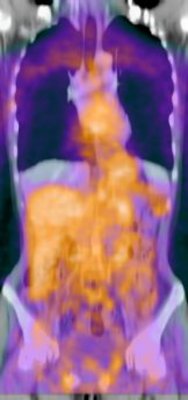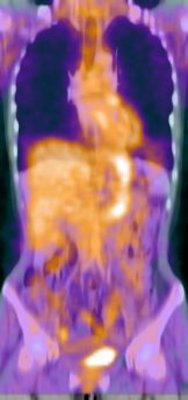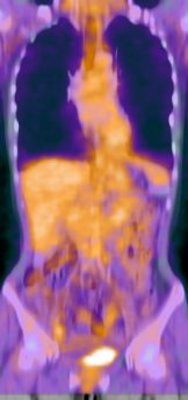Use case: PET-CT Registration of Melanoma Patient
This use case demonstrates the compensation of respiratory motion in a PET-CT image pair of a melanoma patient. The images were acquired at different times with individual scanners.
Please see our page on Image Registration for more details regarding the component.
The images show the same coronal slice through the CT image with the corresponding PET image used as colored overlay.

Initial image placement. The offset is due to the different scanner coordinate systems.

Result of the rigid Image Registration. This type of registration can compensate translation and rotation between the images but does not change the image content.

Result of the nonrigid Image Registration, which deforms the image content to correct respiratory and cardiac motion.
The example shows that the rigid image registration can only provide a global link between scanner coordinate systems. In the depicted scan, however, respiratory motion is mainly causing a clearly visible spatial misalignment of the image content between the CT and PET scans.
This is partly due to the different scan protocols of CT and PET regarding the respiration, which is due to the longer scan times in PET.
For many applications, especially when linking findings between scans or in follow-up studies, the computation of a deformation that compensates respiratory motion is necessary. As the images demonstrate, our multi-modal nonrigid image registration is capable of correcting these motions.
